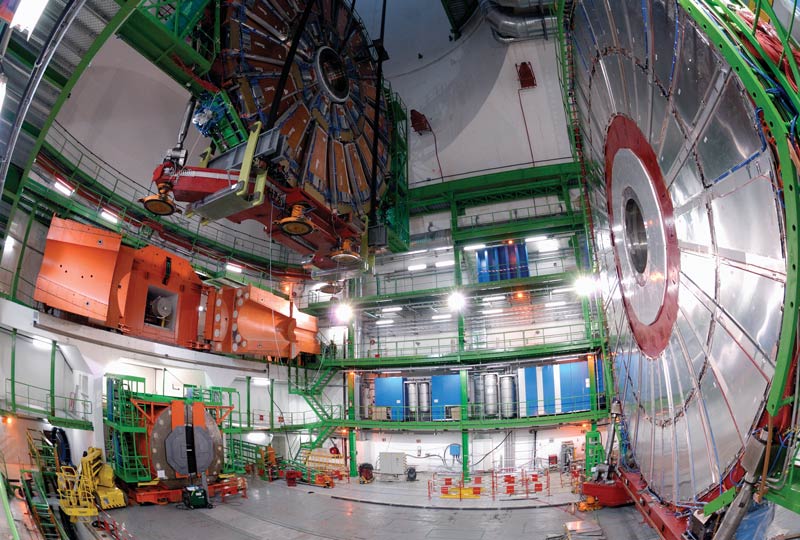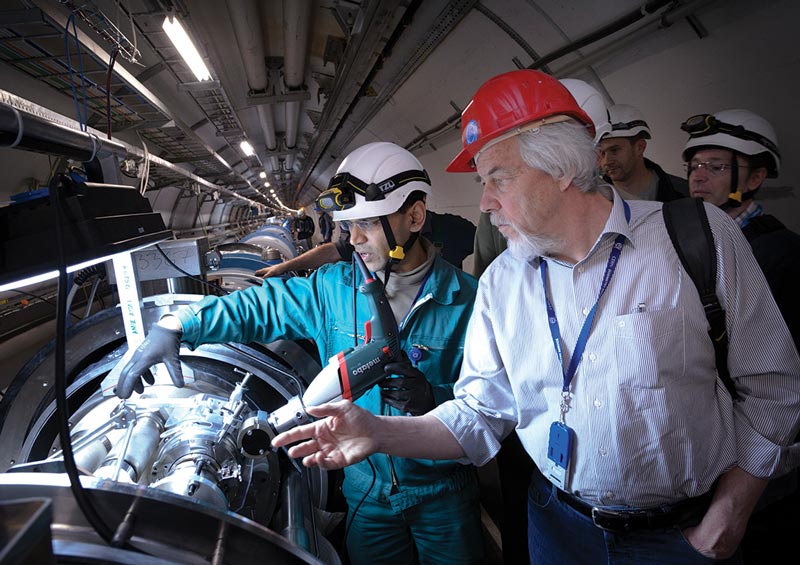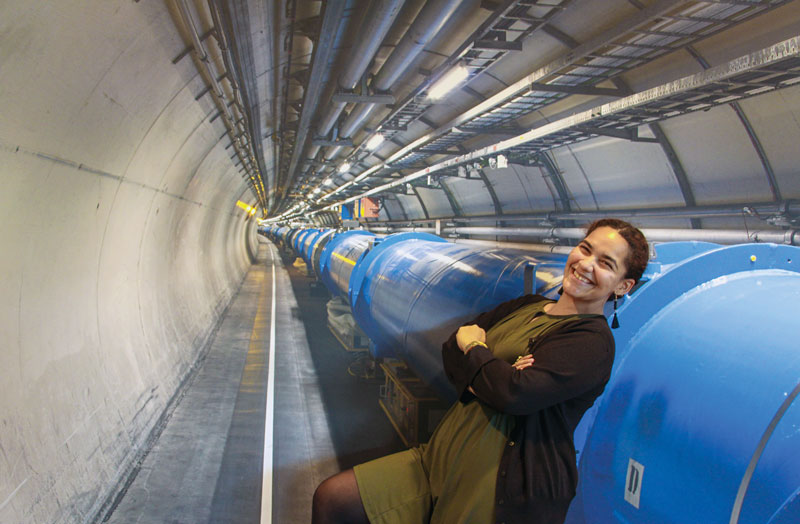CERN The Place to Be
Spring
2019
Feature
CERN The Place to Be
Diyaselis M. Delgado Lopez, SPS Member, University of Puerto Rico–Mayaguez
When it comes to particle physics, the European Organization for Nuclear Research (known as CERN) is the place to be. I went into physics because I am curious about the universe and why we are here. To study the minuscule fundamental particles that make up the universe, we need to build large-scale, complex scientific instruments. The tools of high energy physics (HEP) research—complex accelerators, sensitive detectors, high-volume data storage and analysis—are required to answer the essential questions about how the universe was created. The Large Hadron Collider, located in CERN’s accelerator complex, is the largest machine in the world—and one of the most expensive—but it gives us the ability to study the building blocks of the universe. 
I am a member of the Compact Muon Solenoid (CMS) experiment on the Large Hadron Collider. The CMS detector is built around a huge solenoid magnet. This takes the form of a cylindrical superconducting coil that generates a magnetic field of 4 tesla. The field is confined by a steel bulk that is extremely heavy and dense for its compacted size, hence the name.
I have been intrigued by high energy physics from the very beginning, even when I barely knew what it meant. Before joining the CMS team, I had done research on astrophysics, which involves studying some of the universe’s largest objects, and now I was captivated by its tiniest components: subatomic particles. I approached my professor with the curiosity to know more and to ask for a spot on the particle research group at my school, the University of Puerto Rico–Mayaguez. I was accepted and became a CMS nondoctoral student working on testing physics analyses focused on supersymmetry and dark matter studies for long-term preservation and reproducibility.
After a year of research, I had the opportunity to join CERN on-site for six months as the representative from Puerto Rico to participate in the Non-Member State Summer Program at CERN and later on as part of the University of Michigan Research Semester Abroad program. Both programs aim to provide undergraduates with research experiences at CERN.
I was assigned to the data preservation and open access division at CERN. The staff members who reviewed my application thought this department was a good fit for my computing abilities and general theoretical knowledge of high energy physics. My project was to help the open data division better store its information so that it can be preserved for future use by both the CERN community and any physics enthusiast. To do this, I developed and tested simplified examples of research to see how to best structure the data for long-term preservation and reproducibility. I created workflows so that raw data can be run on-demand, even after years have passed from the original experiment. This means that no matter how much computer technology changes, physicists of the future will be able to access the data from experiments conducted at CERN.
After this unique experience abroad, I’ve continued my on-campus research on supersymmetry under the same CMS experiment as I prepare for my graduate education centered on particle physics. I did not expect to fall in love with the field of particle physics, but I have found my niche, and for that I am grateful to my professor who helped me find my career path—and to CERN for making it possible. 

